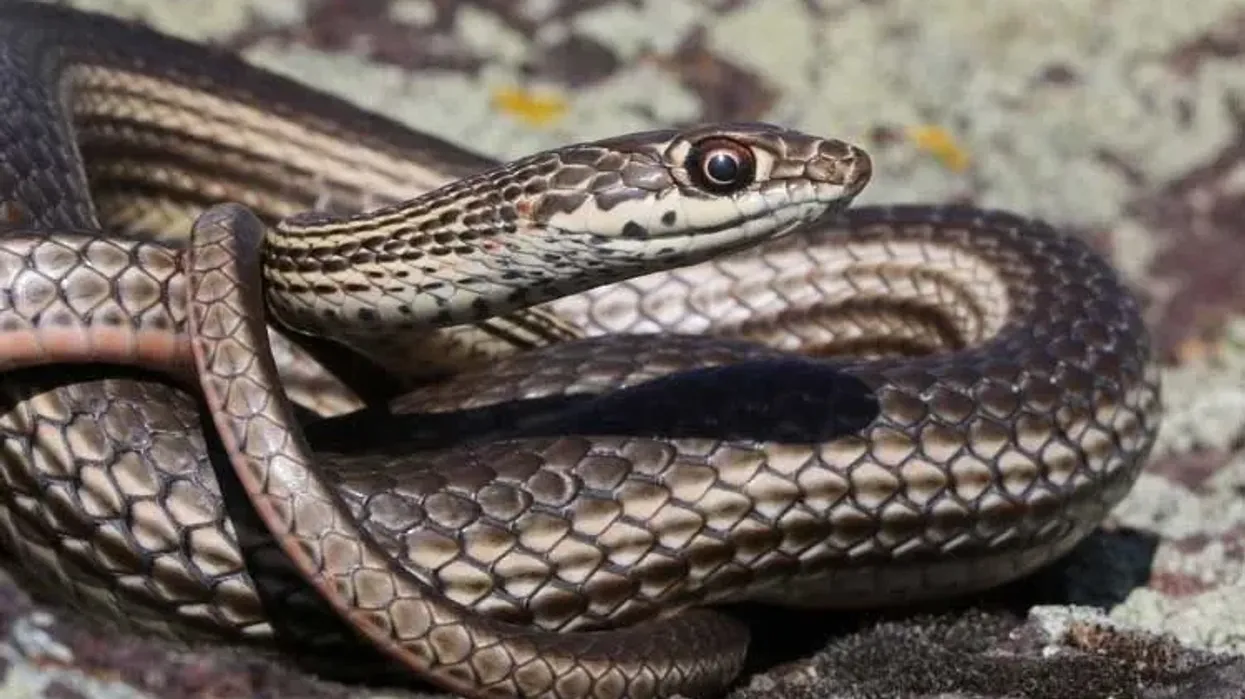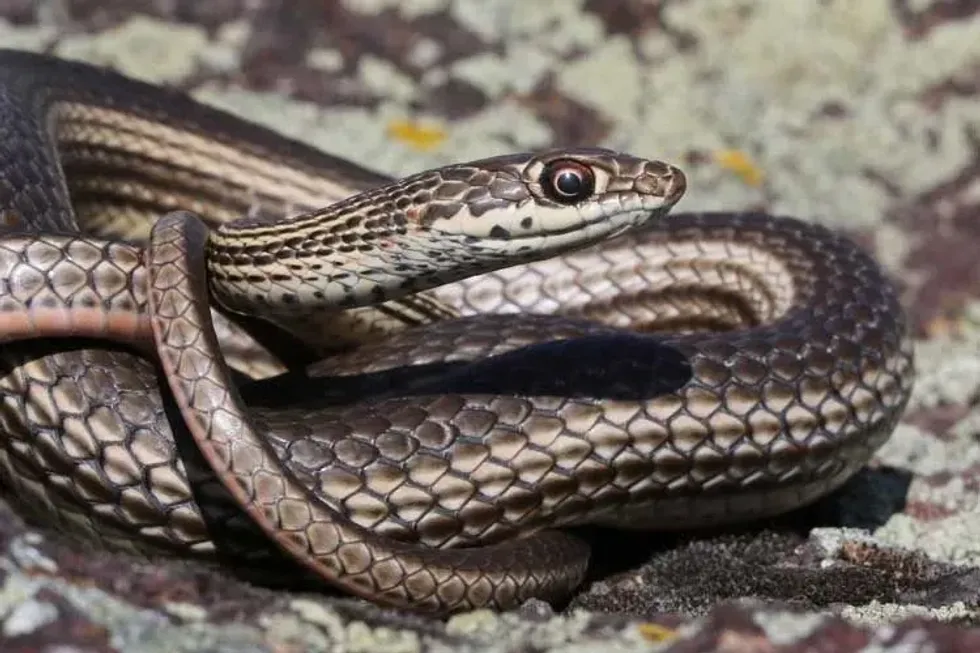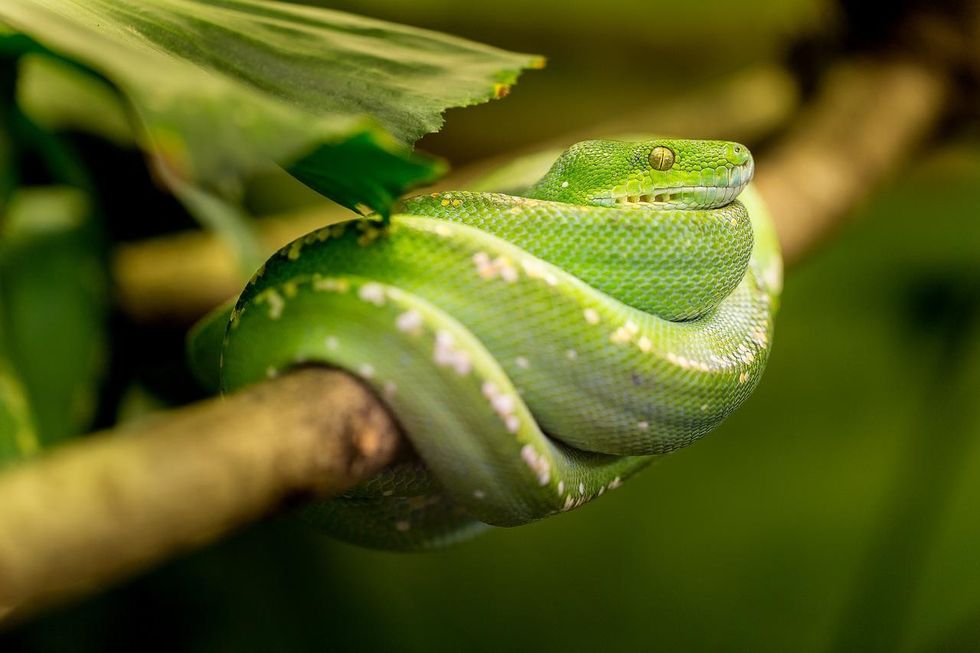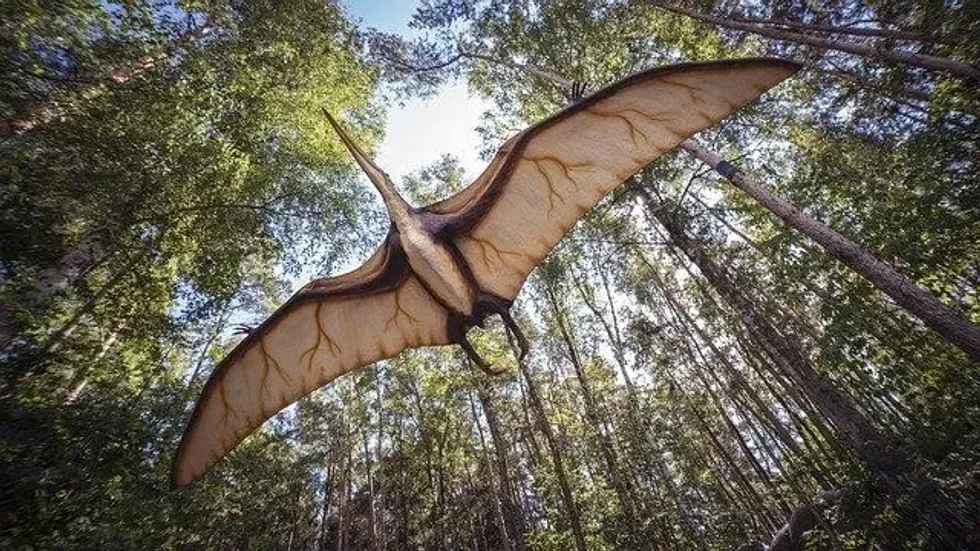Striped whipsnake (Masticophis taeniatus) is a non-venomous snake species of the Colubridae family. The back of these snakes is dark brown, black, or gray-colored with light-colored stripes and smooth scales.
Former scientific names were Coluber taeniatus, Leptophis taeniatus, and more. The genus Masticophis species are usually referred to as coachwhips and whip snakes. These snakes are endemic species of America.
They have slender and long bodies are not a threat to human beings. Masticophis is a Latin word, which is a derivation of Greek words, 'mastix' and 'mastig' meaning 'whip' with the suffix 'ophis.'
There are around eleven officially recognized species and five subspecies in this genus. There are two subspecies under the striped whipsnake that are recognized as valid, Masticophis taeniatus taeniatus and Masticophis taeniatus girardi. The subspecific term, girardi, is named after Charles Frederick Girard, a French-American herpetologist.
The Colubridae family of snakes is the biggest snake family with 249 genera. The subfamily Colubrinae is the second-largest of the colubrids, with 92 genera consisting of 717 species.
If these facts about the striped whipsnake were helpful, then you must read about the eastern brown snake and the western ribbon snake too.
Striped Whipsnake Interesting Facts
What type of animal is a striped whipsnake?
Striped whipsnakes are the snake species of order Squamata and phylum Chordata. They were previously named Coluber taeniatus, Leptophis taeniatus, Masticophis taeniatus, and Zamenis taeniatus. These snakes are active in the day, fast-moving, and highly alert. When threatened, these snakes normally flee into shrubs, burrows, or rocks.
They stand their ground and only strike when they are cornered. Sometimes, some show no sign of aggression, allowing humans to handle them. They are active in the day and retrieve into burrows at night.
What class of animal does a striped whipsnake belong to?
Striped whipsnakes belong to the Reptilia class of animals.
How many striped whipsnakes are there in the world?
The exact number of the striped whipsnakes is not yet known. However, as calculated in eastern Washington, their population is low.
Where does a striped whipsnake live?
Striped whipsnake range of habitat covers North America. They occupy northern Mexico (Arizona, Utah through Nevada) and the western United States.
In the northern parts, the habitat range extends from south-central Washington through southward into the Great Basin in between the continental divide and Cascade-Sierran. Their range continues to the southeast through the continental divide into central and west Texas and New Mexico. They occupy a range in Michoacan, Mexico, in the southern part.
They are found in a range outside the Great Basin through the Rogue River Valley in northern and eastern California and southwestern Oregon. They are also found in the Bryce Canyon National Park in Utah.
What is a striped whipsnake's habitat?
Striped whipsnakes habitat range extends to sagebrush flats, rocky canyons, shrublands, open pine-oak forests, and pinon-juniper woodlands. They also prefer rocky streams and travels to mountains and flatlands. They take shelter in trees, shrubs, old rodent burrows, or rock outcrops, which depends on the habitat they are found in.
Who does striped whipsnakes live with?
Striped whipsnakes live on their own.
How long does a striped whipsnake live?
Striped whipsnake lifespan can reach up to 20 years of age.
How do they reproduce?
There is only a little information about the reproduction of this species. Between June and July, the females lay 3-12 bumpy-shelled eggs. The incubation period lasts for 44-58 days. The eggs hatch after 2-3 months.
What is their conservation status?
The striped whipsnake conservation status has not been evaluated. However, they are common in their natural habitat, which is near water. The State Wildlife Action Plan has given the status of Species of Greatest Conservation Need. They have also been given the status of Priority Species by the WDFW's Priority Habitat and Species Program.
Striped Whipsnake Fun Facts
What does striped whipsnakes look like?
This species has dark brown, black, or gray-colored backs with bluish or olive tint. They have a slender neck, long body, broad head, and large eyes.
They have a dark stripe across the center of the first four rows of their pale, smooth dorsal scales. On their side, there is a cream or white-colored (light) stripe, which is bisected by a dashed or solid black line.
They have cream to yellowish underparts, which fades to white color as it extends towards the head and coral oink on the tail. These snakes have a lower preocular in between the upper labial scales of their mouth.
They also have a divided anal scale. Their teeth are curved backward and sharp to hold on to the prey better.
How cute are they?
These reptiles, like any other snakes, are not considered cute.
How do they communicate?
When these reptiles are threatened, they usually flee. Like all the other reptile species, these snakes also communicate through pheromones and vibrations.
How big is a striped whipsnake?
The striped whipsnake length is 30-72 in (76-183 cm). The length of adult desert striped snakes is around 24-67 in (610170 cm). Juveniles are about 14 in (35.56 cm).
How fast can a striped whipsnake move?
The exact speed of these species is not known. However, these snakes are fast-moving and active reptiles.
How much does a striped whipsnake weigh?
The weight of these reptiles is around 0.24 lb (110 g).
What are the male and female names of the species?
There is no specific name given to female and male whipsnakes.
What would you call a baby striped whipsnake?
There is no specific name given to baby striped whipsnakes.
What do they eat?
These slender snakes prey on small mammals, young birds, frogs, lizards, and insects. They also prey on other snakes, bird eggs, nestlings, and rodents. Juveniles prey on insects like cicadas, locusts, and mole crickets.
Are they poisonous?
No, they are not poisonous. They are also not dangerous to human beings.
Would they make a good pet?
No, keeping the striped whipsnake as a pet is not quite popular. They do very well in their natural habitat.
Did you know...
Colubridae is a derivation of the Latin word coluber which means 'snake.'
Desert striped whipsnake (Masticophis taeniatus taeniatus) species occupy eastern Washington, California, Nevada, Idaho, Utah, Arizona, New Mexico, Colorado, and west Texas.
The Philippine whipsnakes are listed as vulnerable. This species is endemic to the Philippines.
A separate species of snake, Schott's whipsnakes (Masticophis schotti) occurs in Mexico and covers a small range of habitats in south texas.
There are around 7000 and 7500-8000 species of reptiles and amphibians, respectively.
Some predators of these snakes are coyotes, foxes, hawks, and other big snakes. They escape predators by climbing trees or shrubs.
Europe's biggest snake species is the Caspian whipsnake. They occupy regions of Western Europe and the Balkans.
It is a fact that these snakes are shy creatures. However, there were certain myths surrounding them too. It was believed that these snakes are aggressive and would chase any human in their sight. It was also believed that they would whip a person with their thin and long tail.
Few other species of this snake also occupy Singapore and Spain.
At first glance, their scale's pattern looks like they are braided.
The bright green, yellow, or brown oriental whipsnake is a venomous snake of Southeast Asia. The venom is not toxic to human beings.
The striped whipsnakes can adapt to high temperate zones. However, they might die due to overheating.
Young snake species shed more skin than adults.
Why is it called striped whipsnake?
These snakes are named striped whipsnake because of the cream-colored stripes on their body. Whipsnakes are given this name as they resemble a leather whip.
Does the striped whipsnake eat other snakes?
Yes, these species do prey on other snakes like the venomous rattlesnake.
Here at Kidadl, we have carefully created lots of interesting family-friendly animal facts for everyone to discover! For more relatable content, check out these coral snake facts and kingsnake facts pages.
You can even occupy yourself at home by coloring on one of our free printable striped whipsnake coloring pages.










